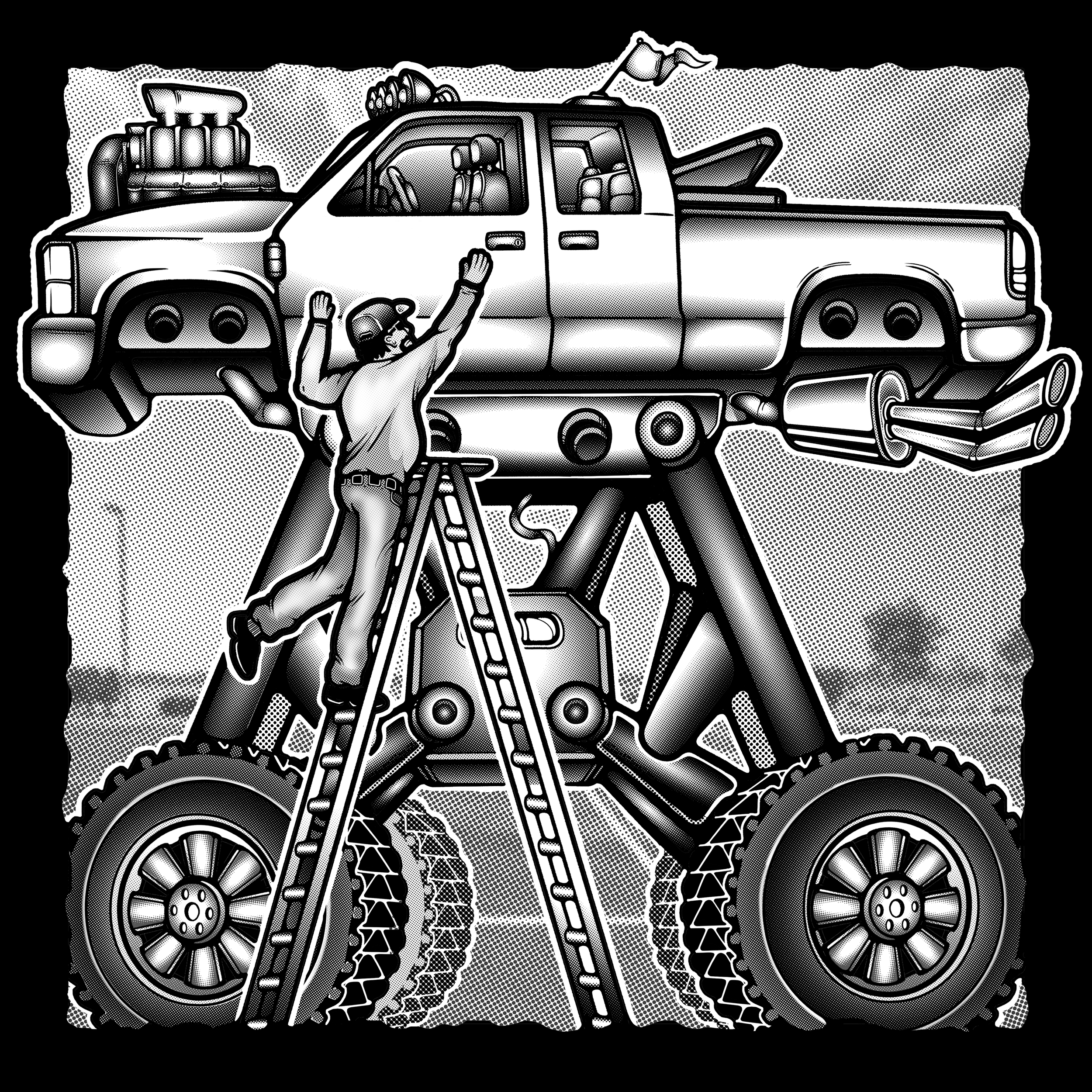Design Process - What is A Man?
Creating the animated video installation.
The design process for the Man Up animated video installation was a journey of translating complex themes of masculinity into visual storytelling. Combining hand-illustrated art with animation, the process began with in-depth research to understand how advertising and media have historically shaped the male identity. From concept sketches to final animation, each stage aimed to visually express the evolution of masculinity through symbolism, style, and narrative. The video installation was designed not only to provoke thought but also to immerse the viewer in a powerful exploration of how traditional and modern masculinity coexist and redefine one another.
Visualizing male stereotypes.
The design process for the What is A Man? animated video installation began with creating five singular, research-based digital illustrations, each representing a key stereotype that men are often pressured to uphold. Each scene was rooted in cultural research to better understand how these societal expectations manifest in masculine identity—specifically, the idea of a man without a suit, muscle, money, big things, or his cool.
The digital illustrations were meticulously crafted using drawing software, allowing for precise control over the details and layers within each composition. The process began by sketching out the main elements of the scene—often centered around a single image that encapsulated the stereotype being explored. These core images were designed to evoke the powerful symbolism tied to each stereotype.
Displaying the content.
I needed to find a unique way to display the content. I sourced a vintage RCA Clearview 13-inch Prison Television, a unique piece that became central to the narrative and design of the installation. The transparency of the TV’s screen was intentionally chosen to symbolize the power of transparency within masculinity, emphasizing the importance of shedding the layers of pretense and confronting the truth of one's identity. Just as the TV’s glass front panel allows viewers to see both the content and the mechanisms behind it, the piece reinforces the concept that masculinity, when stripped of societal pressures, can be just as raw and revealing.
To display the video on the TV, I employed a series of adapters. The first adapter took the USB video file and converted it into an HDMI signal via a digital signage box. The second adapter converted the HDMI signal into a coaxial cable signal, which the TV could interpret through its digital tuner. This setup allowed me to bridge the gap between modern digital content and the analog television, merging the old with the new to amplify the impact of the work.
Defining the artstyle.
The animation process was built directly from the five original digital illustrations, each representing a core stereotype of masculinity. From these images, I created over 200 separate visual assets by breaking down characters, backgrounds, and symbolic details into layered PSD files. These assets were carefully prepared to maintain clean edges, transparency, and flexibility for animation. Once imported into Adobe Premiere Pro and After Effects, I used techniques like parallax scrolling, layer parenting, and subtle distortions to bring each scene to life. This approach allowed the hand-drawn feel of the illustrations to stay intact while adding cinematic motion, creating a layered, dynamic experience that reflects the complexity of modern masculinity.
Below are a selection of individual assets for the animation that defined the overall look and feel of the medium.
Self-made visual references.
To ensure the animated scenes felt natural and believable, I incorporated direct reference photography into my illustration process. I took photos of my own hands and arms in various poses to accurately capture the anatomy, gestures, and movements needed for specific scenes. By referencing real physical motion, I was able to design more expressive and realistic character actions, giving the animations a stronger sense of weight and authenticity. This hands-on approach allowed me to bridge the gap between stylized illustration and believable motion, making the emotional storytelling more immediate and relatable.
Layers to completed compositions.
Once the individual assets were created, the next stage of the animation process involved building layered compositions in Adobe Premiere Pro and After Effects. Each scene was constructed by stacking multiple visual layers such as foregrounds, midgrounds, backgrounds, and animated elements—to create depth and dimension. In Premiere Pro, I organized the basic timing and sequencing of the scenes, arranging how each layer would appear and transition. Then, in After Effects, I refined the movement and interaction between layers using keyframes, opacity shifts, and subtle motion effects like parallax scrolling and scale adjustments. This method of building up layers allowed each composition to feel dynamic and immersive, giving the hand-drawn artwork a sense of breathing life while maintaining control over the pacing and emotional tone of the storytelling.
Bringing the animation to life.
The exhibition installation aimed to fully connect the digital animation with its physical presentation. The RCA Clearview CRT television was hand-painted with acrylics to reflect the bold, expressive style of the animation, blending the artwork with the display itself. Audio played through an old-school telephone handset, intentionally low-fidelity to match the analog, nostalgic atmosphere. Surrounding the TV, five small framed prints, each highlighting one of the film’s major scenes, offered a deeper look at the stereotypes explored, creating a cohesive experience that bridged both visual and emotional storytelling.
Use the arrows buttons or swipe horizontally to view. Click the buttons to explore the design process.
2025 Rutgers University Newark.
Graphic Design Senior Capstone Exhibition - Common Ground : Perspectives on Freedom





































